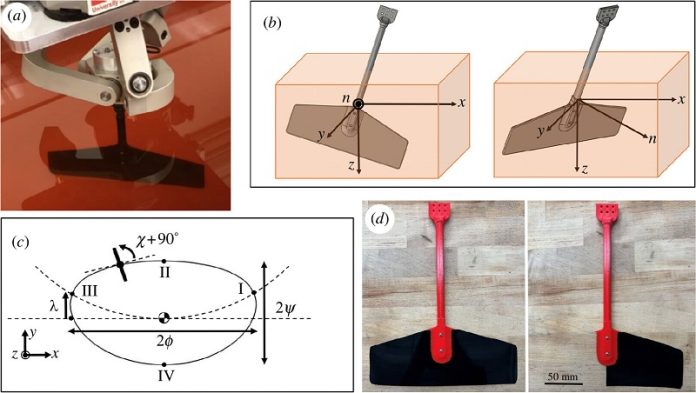
Fish fins and insect wings are amazing pieces of natural engineering that help their owners move efficiently through water or air.
Engineers have long looked to animals for inspiration, designing airplanes with wings and boats with fin-shaped rudders.
Recently, researchers at Caltech and other institutions have been exploring how natural movements can inform the design of machines.
A recent study titled “Bio-inspired compensatory strategies for damage to flapping robotic propulsors” was published in the Journal of the Royal Society Interface.
This study focuses on how robots, like animals, can adapt to damage.
Many animals use flapping motions to move, and robots with flapping parts can do the same. What’s impressive about fish and insects is that they can still move efficiently even if their wings or fins are damaged. For instance, some fish can survive and swim even with 76% of their fins damaged.
Researchers at Caltech, led by Mory Gharib, wanted to see if a robot could achieve the same adaptability. Gharib is a professor of aeronautics and medical engineering at Caltech and the director of the Center for Autonomous Systems and Technologies (CAST).
Along with graduate student Meredith Hooper and postdoctoral scholar Isabel Scherl, Gharib tested a flapping robot in a tank of oil, which provides more accurate measurements than water.
After analyzing the robot’s movements, the researchers cut off part of the robot’s flapper. Without intervention, the robot couldn’t swim anymore. However, the researchers equipped the robot with a machine learning system that allowed it to experiment with different swimming strokes, just like an injured fish or insect would.
The robot tried swimming in 10 different ways, and the forces generated by these movements were measured. The machine learning algorithm then selected the best strokes and suggested new ones inspired by the top candidates. This process of trial and error continued until the robot found the most efficient swimming motion, even with 50% of its flapper removed.
“Autonomous underwater vehicles (AUVs) that explore the ocean are very expensive to build and deploy. If an AUV’s propulsion system fails in a remote area, it essentially becomes ocean trash. Our research could help AUVs complete their missions and be recovered, even if they get damaged,” Hooper says.
This adaptability could also improve micro air vehicles (MAVs), which are used in emergency response situations, such as searching for trapped individuals after an earthquake. MAVs often navigate through complex terrains where damage is likely. This research could make MAVs more robust and capable of completing their missions despite damage.
Interestingly, while both the robot and animals can adapt their strokes after damage, they don’t always make the same adjustments. Animals like fish tend to increase the amplitude of their strokes but not necessarily the frequency. The robot, however, adjusted both amplitude and frequency. This difference is likely due to evolutionary pressures on animals that aren’t relevant to robots.
This study shows that robots can learn to adapt to damage in ways similar to animals, potentially making them more reliable and effective in various challenging environments.



